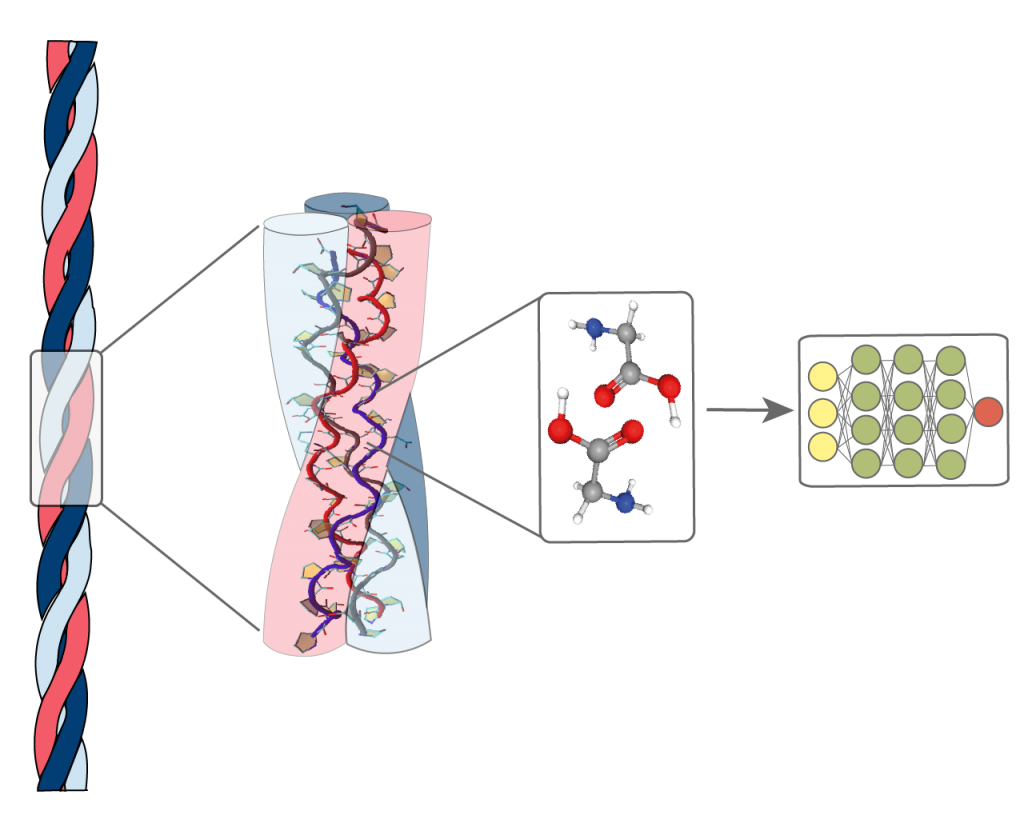Project 1: Machine learning for hydrogen atom transfer rates in organic molecules
Collagen is the most abundant protein in our body and performs a variety of functions, including strengthening and supporting skin, tendons, and bone tissue. Recent research of the Gräter research group revealed that collagen produces highly reactive radicals when subjected to mechanical stress, which can damage surrounding tissue. At the same time, it is shown that collagen can mitigate radical damage. In light of these findings, this project aims to investigate the relation between collagen-related diseases and defenses against radical damage, as there are more than 1000 known genetic collagen mutations. The influence of these mutations and their consequences on the function of collagen on a molecular level are not well understood. Since microscopes cannot be used to observe interactions on an atomic scale, computer simulations are more suited in helping to understand these dynamic molecular processes.
In order to simulate changes of a molecular system over time, an accurate description of interatomic energies and forces is needed. Quantum mechanical energy calculations are complex for large systems such as collagen fibrils since their computational cost scales roughly cubic with the system size. Machine learned potentials are a data-driven energy calculation method which maps the atomic coordinates to the potential energy of the system using a machine learning model. These models are computationally less expensive than quantum mechanical calculations, but can reach similar accuracies, thus offering the ability to speed up large scale molecular dynamic simulations.

Team

T.T.-Prof. Dr. Pascal Friederich
Principal Investigator (Karlsruhe Institute of Technology)
Phone: +49 721 60844764
More Information

Prof. Dr. Marcus Elstner
Principal Investigator (Karlsruhe Institute of Technology)
Phone: +49 721 60845705
More Information
